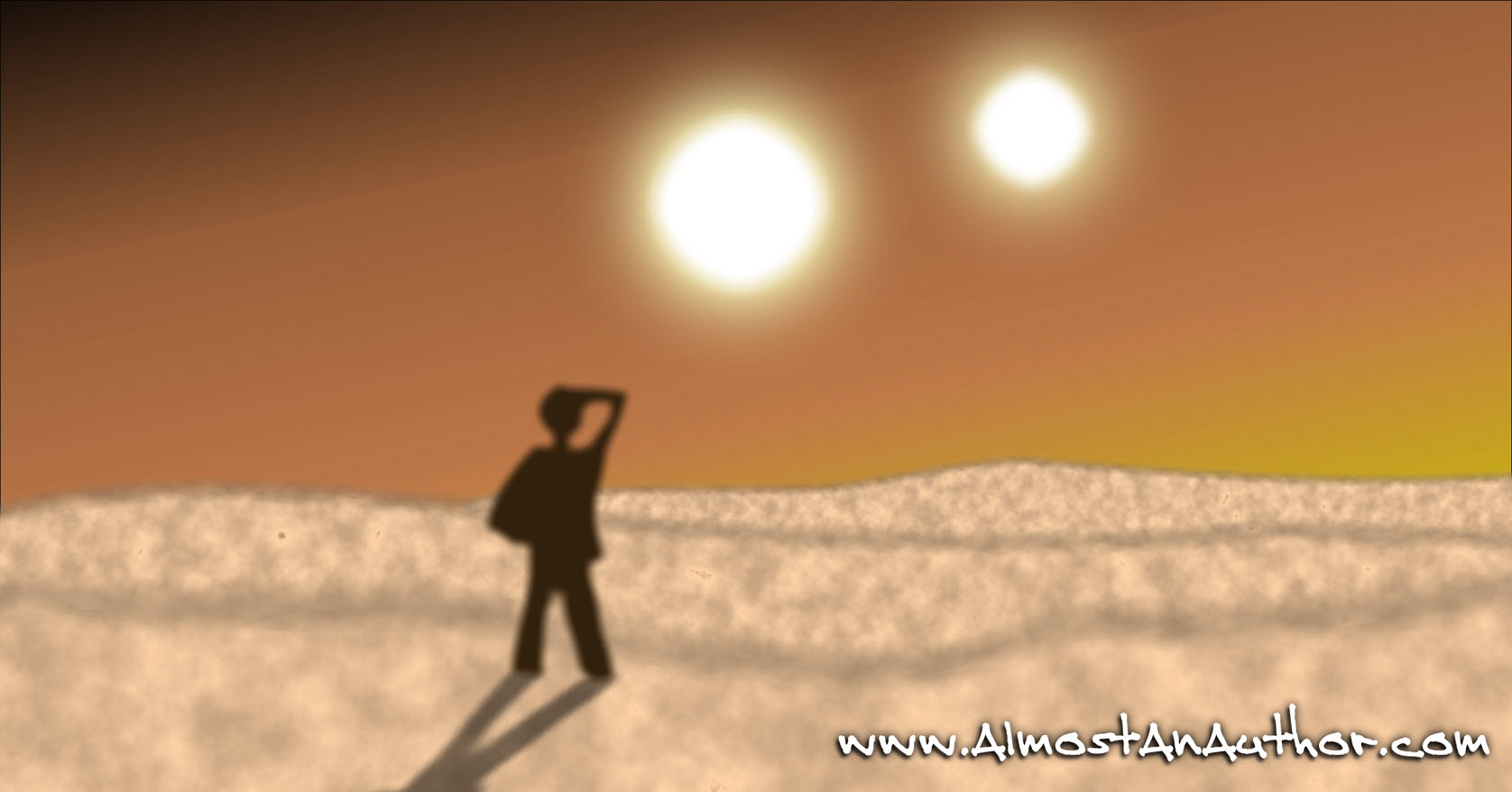As Tatooine’s twin suns slowly inch to the sand dunes in the horizon, a lone figure strains his eyes as he scans the endless wastes to the west. Some of us are so familiar with Star Wars that we can’t remember the first time we saw young Skywalker against the backdrop of the two setting suns, but this scene is anchored in my mind as a brilliantly subtle method of showing a vastly different world.
Not every sci-fi or fantasy story has fantastic geographical elements, but some of the most memorable do. If you’ve considered writing a speculative fiction book, you’ve probably already considered a number of its aspects, but you’ll need to consider how the world’s geography shapes the culture of your storyworld.
The titular world described in the novel Dune by Frank Herbert served as a great inspiration to George Lucas’s Tatooine. Windswept sands and arid climates make for eye candy, whether reading about them or watching them, but the real gem in Dune is seeing how the local people survive in their environment. Water is such a scarce resource that it becomes a trade commodity and advanced suits are used to recycle their liquid wastes. But dehydration isn’t the only concern, since deadly storms whip up frequently and massive worms seek to devour anything that makes vibrations on the sands. The setting is incredibly perilous and consequently the indigenous people live a Spartan, nomadic lifestyle. I think because of the climate and the culture, Herbert models the people like a romanticized version of 19th Century Arabs, though with a sort of mysticism uniquely their own.
 Closer to home but no less exotic, Homer Hickham’s novel Crater takes place on our own moon. If the author’s name sounds familiar to you in a non-literary sense, that’s because Hickham was the real life main character in the movie October Sky. After a successful career at NASA, he’s taken up writing Christian Science-Fiction situated on a lunar landscape. Crater, the first novel in his series, deals with the difficulties of lunar survival on a well-established colony. The book is geographically interesting, from the ubiquitous low-gravity to the commerce routes used by space age delivery trucks. Starting in his home in a rugged Helium-3 mining town, the main character must trek across craters, canyons, and rocky plains to obtain a mysterious package at the moon’s main port of call. Because of the harsh setting and the rugged independence of these colonists, Hickham portrays the men and women of the moon similar to Appalachian miners.
Closer to home but no less exotic, Homer Hickham’s novel Crater takes place on our own moon. If the author’s name sounds familiar to you in a non-literary sense, that’s because Hickham was the real life main character in the movie October Sky. After a successful career at NASA, he’s taken up writing Christian Science-Fiction situated on a lunar landscape. Crater, the first novel in his series, deals with the difficulties of lunar survival on a well-established colony. The book is geographically interesting, from the ubiquitous low-gravity to the commerce routes used by space age delivery trucks. Starting in his home in a rugged Helium-3 mining town, the main character must trek across craters, canyons, and rocky plains to obtain a mysterious package at the moon’s main port of call. Because of the harsh setting and the rugged independence of these colonists, Hickham portrays the men and women of the moon similar to Appalachian miners.
 While my first two examples take place in environments naturally devoid of water, the complete opposite is seen in Howard Andrew Jones’ Pathfinder Tales: Beyond the Pool of Stars. In it, Miriam Raas is pulled back into her family business of deep sea salvaging and must fight off monsters, pirates, and evil sorceresses along the way. But she isn’t without her tools of the trade: a magical version of scuba gear, complete with underwater breathing and enhanced mobility. The society that has grown up around her home in Desperation Bay is one of commerce and shipping, complete with nobles and merchants vying for importance through petty political squabbles you could expect in such an environment. The culture is probably most similar to that of Britain during the peak of its naval might, but the magical influence sets the tone as something distinctly different.
While my first two examples take place in environments naturally devoid of water, the complete opposite is seen in Howard Andrew Jones’ Pathfinder Tales: Beyond the Pool of Stars. In it, Miriam Raas is pulled back into her family business of deep sea salvaging and must fight off monsters, pirates, and evil sorceresses along the way. But she isn’t without her tools of the trade: a magical version of scuba gear, complete with underwater breathing and enhanced mobility. The society that has grown up around her home in Desperation Bay is one of commerce and shipping, complete with nobles and merchants vying for importance through petty political squabbles you could expect in such an environment. The culture is probably most similar to that of Britain during the peak of its naval might, but the magical influence sets the tone as something distinctly different.
When you think of your storyworld, consider its unique geographical features and how civilizations might develop around them. As in these examples, you don’t have to invent environment-culture interactions from scratch. Readers expect people (and all sentient beings) to naturally develop functional cultures around their environment, and they expect these interactions to have elements similar to what we’ve historically seen on earth. So the more you borrow and tweak elements from our own diverse world for your own purposes, the more your settings will feel realistic.
